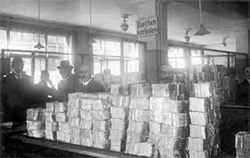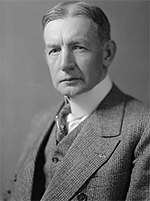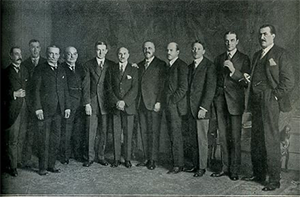The Dawes Plan
The Dawes Plan was a set of agreements that defused tensions in Europe after World War I, revitalizing Germany in the process. 
Germany had reluctantly signed the Treaty of Versailles, an article of which required the payment of reparations to Germany's wartime enemies. The terms of the treaty did not set a total amount for those reparations; that figure was worked out after a series of meetings between representatives of the World War I Allies: Belgium, France, Italy, and the United Kingdom. The final total was astronomical, set at a London conference in April 1921. Germany had a schedule for making payments and was bound by the terms of the Treaty of Versailles to make those payments. For a variety of reasons, including a scarcity of coal and, consequently, steel production, Germany suffered from severely diminished revenues. Having to pay enormous amounts of money to wartime enemies exacerbated this problem; and in 1923, Germany defaulted on its reparations payments. This angered the governments of Belgium and France enough that they sent troops into the Ruhr, the center of German coal and steel production. 
The response from other Allies was to avoid further tensions. A committee chaired by World War I veteran and banker Charles G. Dawes (right), who was the first director of the Executive Branch's Bureau of the Budget. The 10-member committee had two people from each of the five Allied countries:

The committee hammered out an agreement in August 1924 that gave Belgian and French troops a reason to leave the Ruhr Valley: American banks loaned Germany huge sums of money to support reparations payments. In addition, the Reichsbank, the German bank, found itself reorganized under Allied supervision. The combination of the cash infusion and the return of the Ruhr industry to German coffers turned the economy around and reinstated German dominance of the steel trade throughout Europe. |
|
Social Studies for Kids
copyright 2002–2025
David White




